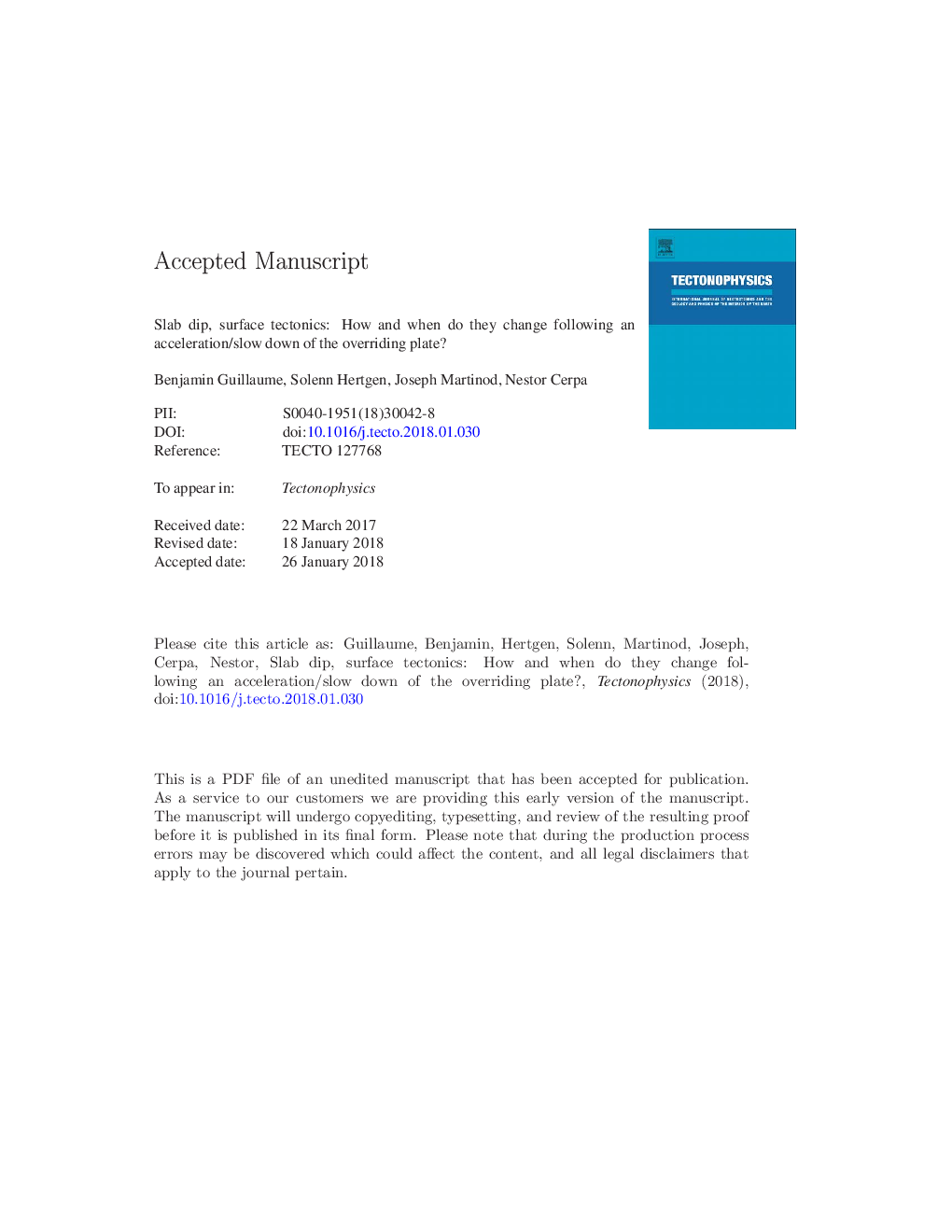| Article ID | Journal | Published Year | Pages | File Type |
|---|---|---|---|---|
| 8908755 | Tectonophysics | 2018 | 38 Pages |
Abstract
We present analogue models simulating the subduction of an oceanic lithosphere beneath an overriding plate advancing at variable rates. The convergence velocity is imposed by lateral boundary conditions in this experimental set. We analyze the geometry of the slab and the deformation of the overriding plate. Experiments confirm the strong correlation between the absolute velocity of the overriding plate on the one hand, the geometry of the subducting plate and the deformation of the overriding plate on the other hand. Following an instantaneous change in kinematic boundary conditions, the subduction system progressively shifts to a new steady-state regime. Models suggest that the adjustment time necessary to shift from the previous to the new equilibrium is independent of the imposed upper plate velocity. Transient stage lasts â¼ 12.5 ± 6â¯m.y. for the shallow slab dip (100-150-km depth), â¼ 29.2 ± 10â¯m.y. for the deeper slab dip (300-350-km depth), and â¼ 2.2 ± 2â¯m.y. for the upper plate deformation. The analysis of present-day subduction zones and their evolution through the last 20â¯m.y suggests an adjustment time of â¼15â¯m.y. for shallow slab dip and â¼20â¯m.y. for deep slab dip in Nature. Since only few subduction zones have shown a constant upper plate velocity over the last 15â¯m.y., it suggests that most of them are in a transient stage at present-day.
Related Topics
Physical Sciences and Engineering
Earth and Planetary Sciences
Earth-Surface Processes
Authors
Benjamin Guillaume, Solenn Hertgen, Joseph Martinod, Nestor G. Cerpa,
